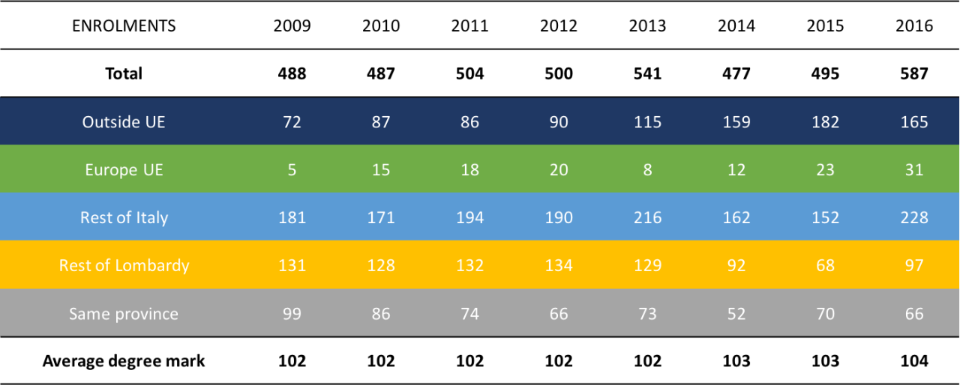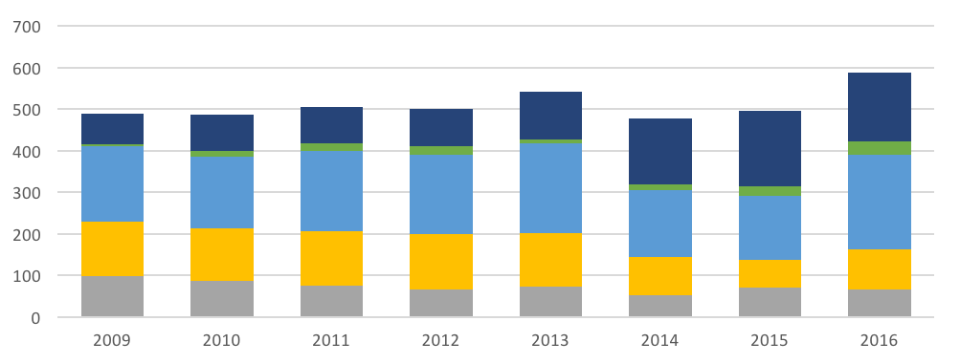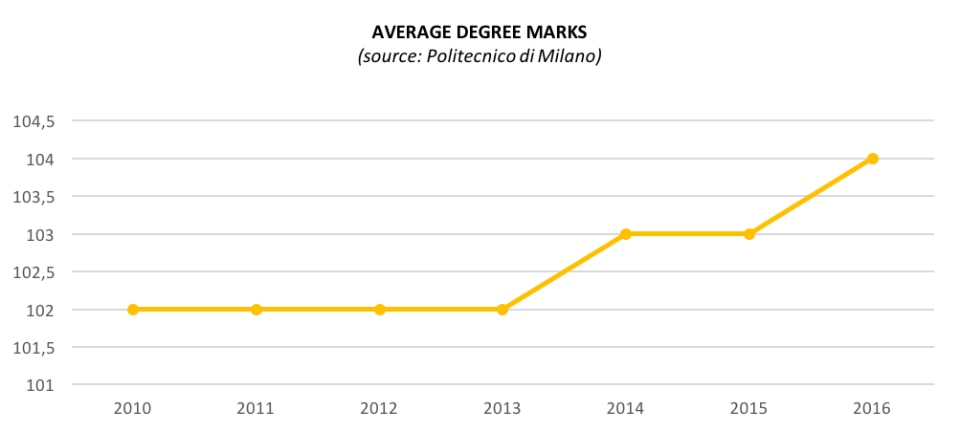Elsebeth Gerner Nielsen, former Danish Minister for Culture and now director of one of Denmark’s top design schools, the Designskolen Kolding, once addressed the issue in question at an international seminar, after setting out her high consideration for the culture and tradition of her country and for the role that universities play in the transmission of this knowledge to future generations … she then continued with the statement “it is precisely for this reason in the institute that I direct I wanted to maintain Danish as the primary language of teaching in all the Bachelor courses”. A position rigorously expressed and maintained, that takes for granted the fact that in a country like Denmark second level education is offered in English. It is a choice shared by the European “non-native English-speaking” universities that sit at the top of international rankings[1], examples being Aalto University in Finland, Konstfack in Sweden and TU-Delft in the Netherlands (while TU-Eindhoven has extended the offer in English at Bachelor level).
In Italy the first design course offered entirely in the English language at a national level was launched back in 2005 at the Milan Polytechnic. Promoted by the then Head, Alberto Seassaro, and put into practice by myself, the intention was that of bringing together the high number of international students interested in studying design in Milan. The aim was to set up a programme sufficiently wide and transversal that it would be able to attract and educate architects with a broad, systemic vision, capable of addressing complex problems and bringing sustainable innovation into the system of companies, institutions and contemporary society. The framework given aimed on the one hand at conveying the identity and the peculiarities of design Made in Italy, on the other to place this approach in relation to the dynamics of innovation taking place at a global level.
The benefits given by the quality of these educational environments have proved to be highly superior compared to the inevitable lower teaching effectiveness of teachers engaged in teaching in English and not in their native language
This was how the Masters degree Design del Sistema Prodotto Servizio / Product Service System Design began, offered half to Italian students and half for international students. The faculty was made up of both Italian lecturers and native-English-speaking professors (I’m aware of the great contribution made, right from the start, by Norman Mc Nally from the Glasgow School of Art for example, likewise from Neil Frankel and Cindy Coleman from SAIC – the School of Art Institute of Chicago). The initial hesitation led us to offer the possibility - explained in the educational regulations - to substitute each course with an equivalent taught in Italian. No student, either Italian or foreign, requested to use this option - to the extent that after a few years it was eliminated.
What followed can be seen in the current educational offer: gradually, starting in 2012 all the other degree courses offered by the School of Design have also chosen to teach completely or at least a section, in English; a new course in Digital and Interaction Design was launched this year only in English; other institutions, such as Roma La Sapienza with their Masters degree course in Product Design, have followed suit. This has brought about significant changes. I can talk about the Milan Polytechnic with which I have direct experience.
Italian students have gone back to choosing Masters degree courses at the Polytechnic, after some years of a reduction in enrolment on second-level courses. The three-year graduates of the School in fact tended not to continue their studies or enrol in a foreign university to study in an international environment able to offer broader visions and stimuli than previous experiences. The inversion of this trend is, in my opinion, an essential point for a public university, such as the Milan Polytechnic.
To this has been added the increase in enrolments from international students, both European and non-European, and the growth in numbers of students arriving from other places on exchanges. Overall this has led to the creation of highly diversified "classroom communities" full of stimuli: the benefits given by the quality of these educational environments have proved to be highly superior compared to the inevitable lower teaching effectiveness of teachers engaged in teaching in English and not in their native language.
You only have to wander around Milan during the Design Week to understand how it is unthinkable today to work as a designer at a high level without knowing how to converse and communicate in English
Lastly, there are more international lecturers who have been able to teach in our classrooms, bringing with them skills and points of view also distant from those “Made in Italy”. Internationalisation “at home” has been established in a fruitful way with positive results:
– the average degree mark has gone up, so a community of students with this kind of mix has achieved better results than in the past;
– employment data for mixed language courses or those totally in English is very positive, with a percentage of employed one year after graduation between 84.2% (for Fashion) and 96.8% (for Design & Engineering); with a net monthly salary that exceeds 1,600 euros per month (for Product Service System Design graduates) and with a share of less than 20% of people employed abroad.[1]
– the QS ranking in the field of "Art & Design", based on academic and job market reputation, has put the School of Design today at the top of the rankings occupying the current number 7 world position, ahead of major universities such as Yale and Stanford.;
– two Chinese universities, the Beijing Tsinghua and the Tongji of Shanghai, are planning to open a “campus abroad” in Bovisa, near the School of Design.


In short, a positive picture emerges, both for graduates and for the Italian professional and industrial system, which needs highly-qualified individuals capable of addressing the global competitive processes in progress. You only have to wander around Milan during the Design Week to understand how it is unthinkable today to work as a designer at a high level without knowing how to converse and communicate in English.
The recent pronouncements of the Consiglio di Stato make, in some cases, this path taken more difficult to pursue, but it will not change the inevitable course of internationalisation underway that permeates all our daily realities.

- [1]:
- Cfr. QS ranking by subject, “Art & Design”
- [2]:
- source: Employment survey graduates 2015, Milan Polytechnic


